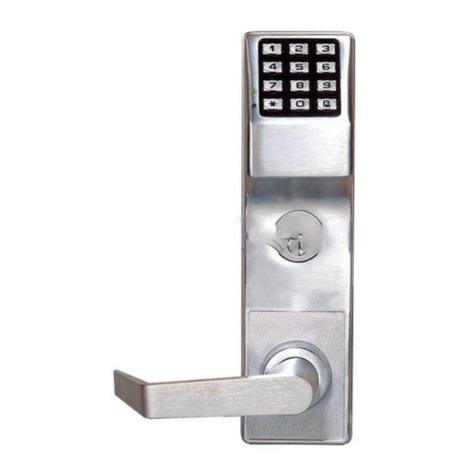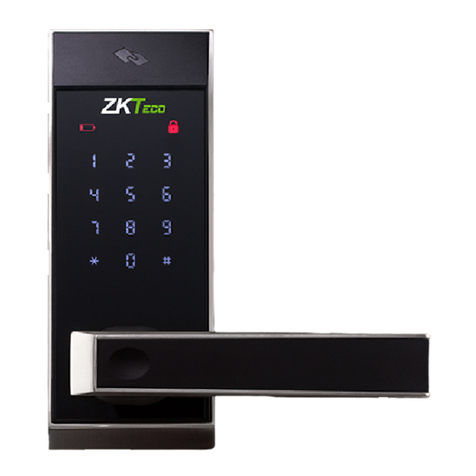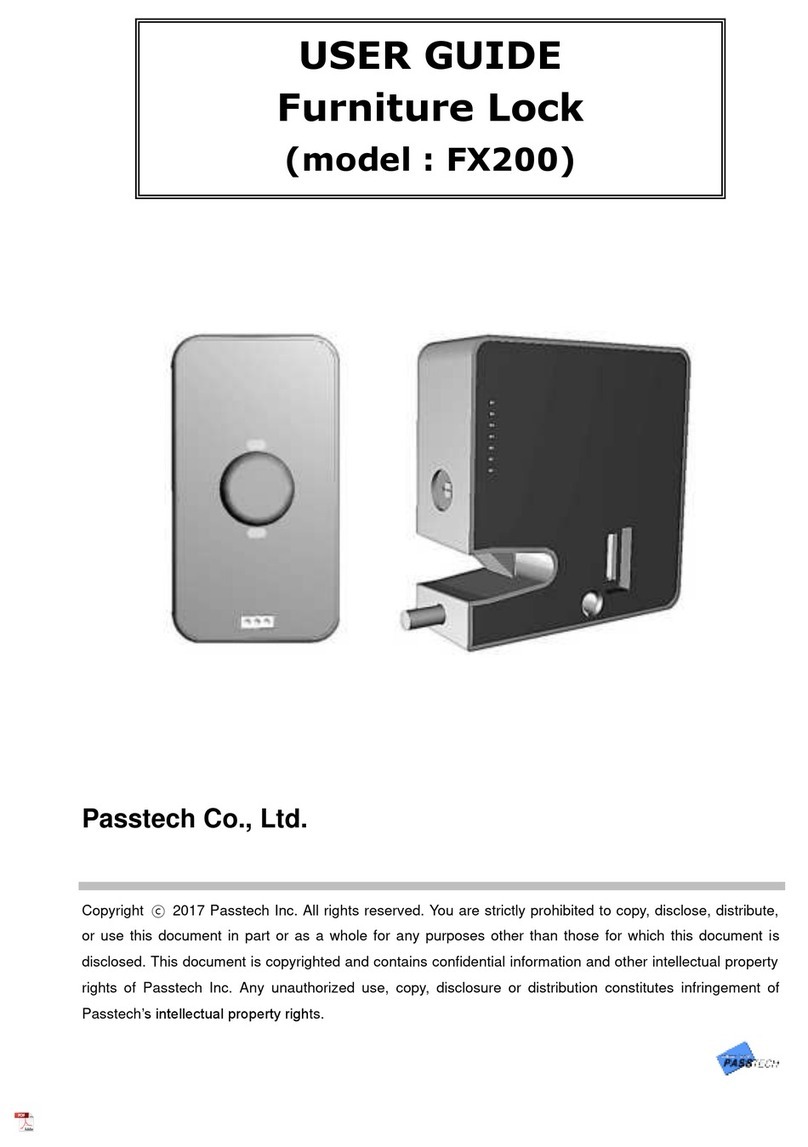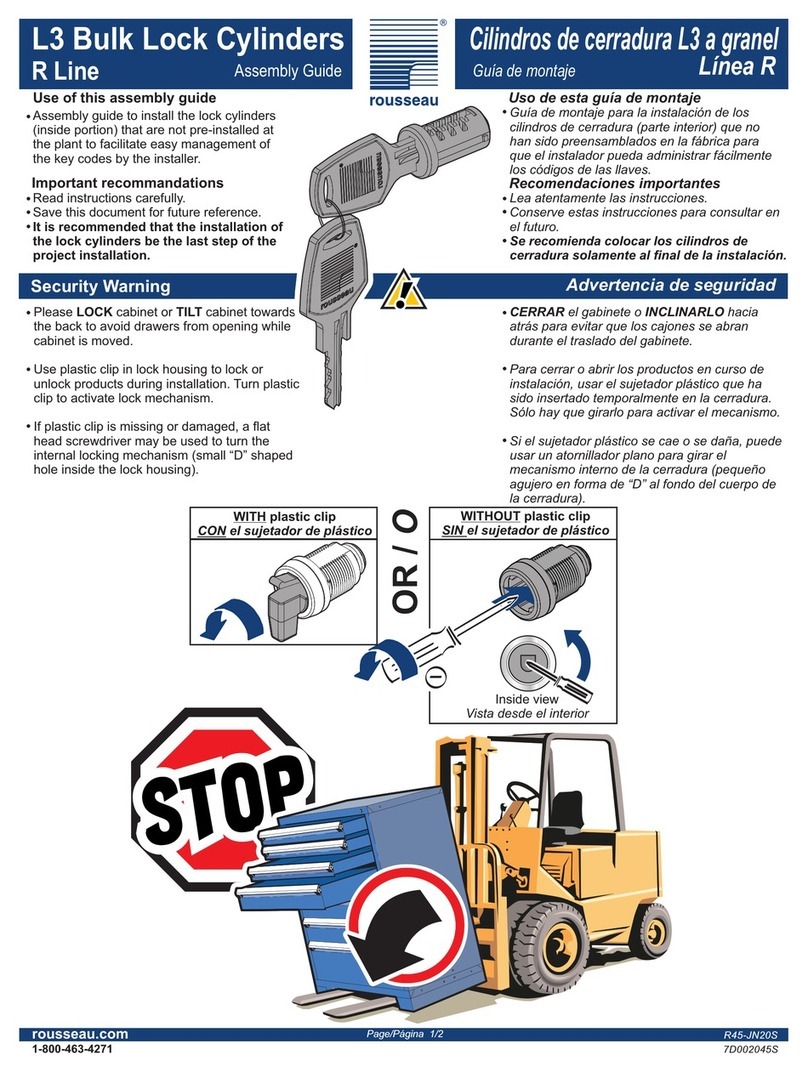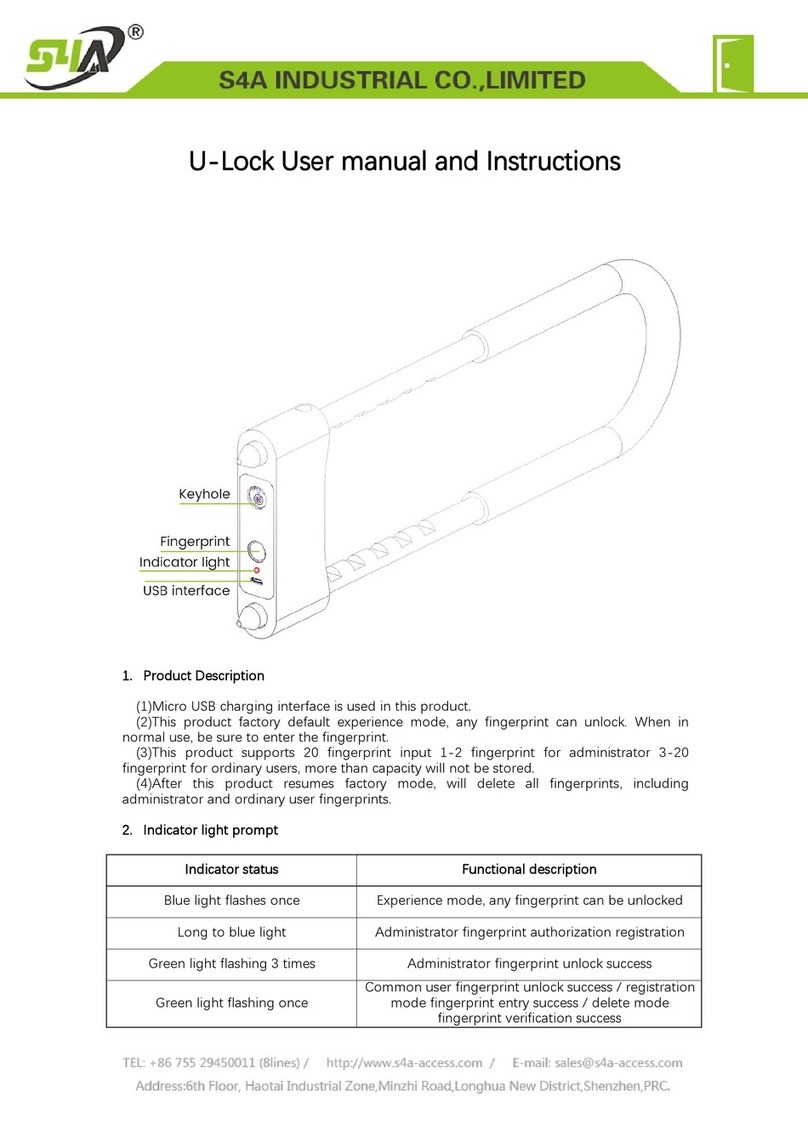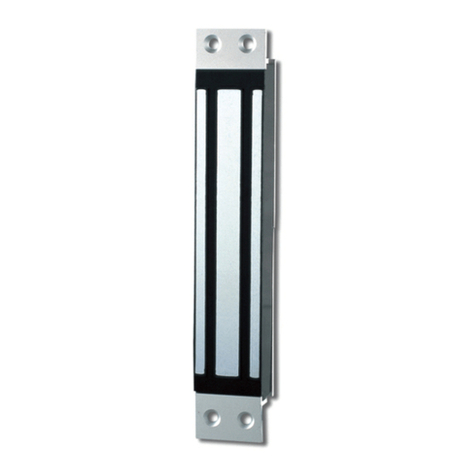Jerith Ever-Latch User manual

Jerith Ever-Latch™ Installation Instructions
This latch requires some assembly. The following pieces should be in the latch bag:
2 - handles with set screws
1 - square spindle
1 - latch front (with Jerith logos)
1 - latch back plate
1 - keeper attached to mounting
bracket
1 - bag of hardware containing:
1 - Allen wrench
2 - 1¾” machine screws
2 - ¾” round-head screws
7 - ½” flat-head screws
1 - ¼” flat-head screw
To assemble and install the latch, complete the following steps:
1) Position the latch front on the side of the gate frame that you want to swing out. Push the
two 1¾” machine screws all the way through the latch front.
2) Place the back plate on the other side of the gate frame and tighten the 1¾” screws to
attach the back to the front.
3) Position the latch at a convenient height (or as required by local codes) and drill four 1/8”
pilot holes in the side of the gate using the screw holes in the latch front and back as a
template. Use the two ¾” screws to attach the latch front to the gate frame and two ½”
screws for the back. The latch must be at least 1¼“ below the top of the gate frame.
4) Place the spindle into one of the handles as far as it will go and use the Allen wrench to
tighten the set screw in the handle.
5) Push the other end of the spindle through the large hole in the latch front and attach the
second handle to the other side of the spindle using the Allen wrench. Make sure both
handles point away from the Jerith logos on the latch front and are parallel to the ground.
6) Place the keeper into the opening of the latch front behind the Jerith logos so that the open
part of the keeper is at the bottom. The magnet in the latch front should automatically attach
the keeper to the latch at this point. This will make positioning the keeper easier.
Depending upon the gate installation, the keeper will be mounted differently. For
A single gate latching against the front of any type of post:
1) Make sure the mounting bracket attached to the keeper is positioned so that the 3 screw holes
on the side are closest to the gate, not the post. If the bracket is facing the wrong way, slide it
off the keeper, reverse it and slide it back onto the keeper.
2) Close the gate against the post and position the bracket so that it is against the corner of the
latch post. Mark the top hole position of the bracket on the post.
3) Open the gate slightly and push down on the latch handle to release the keeper. Slide the
keeper off of the mounting bracket.
4) Using the top hole position that you just marked and the mounting bracket as a template, drill
five 1/8” pilot holes through the recessed screw holes on the bracket, and fasten the bracket
with three ½” screws on the side of the latch post and two ½” screws on the front of the post.
5) Slide the keeper over the mounting bracket and line up one of the three screw holes at the
bottom of the keeper with one of the holes in the mounting bracket. Use the ¼” screw to
secure the keeper to the bracket.
6) Close the gate and test the operation of the latch. If the keeper needs to be adjusted up or
down, remove the ¼” screw, reposition the keeper, and put the screw back in the new location.

A single gate latching inside a column or wall:
1) For this type of installation, you need a “wall mount stringer”. This is a small piece of 1” x 1½“
rail that will attach to the column and hold the keeper in position.
2) Slide the mounting bracket off the keeper.
3) Place the mounting bracket on the corner of the wall mount stringer. Position the leg of the
bracket with 3 screw holes in it on the 1” side of the stringer and the bracket leg with multiple
holes on the 1½“ stringer side. Use the mounting bracket as a template and drill five 1/8” pilot
holes through the recessed screw holes on the bracket. Fasten the bracket to the stringer with
five ½” screws.
4) Slide the bracket/stringer back onto the keeper so that the open side of the stringer is against
the column. Attach the stringer to the column using appropriate fasteners (not provided).
5) Push down on the latch handle to release the keeper.
6) Line up one of the three screw holes at the bottom of the keeper with one of the holes in the
mounting bracket. Use the ¼” screw to secure the keeper to the bracket.
7) Close the gate and test the operation of the latch. If the keeper needs to be adjusted up or
down, remove the ¼” screw, reposition the keeper, and put the screw back in the new location.
A double gate with a gap less than or equal to 1¼” between the gates:
This installation is the same as a single gate attaching to a post. The only difference is that
instead of attaching the bracket to a post, you will attach it to the side of the other gate. If you
can narrow the gap between the gates, this will be a better installation that the method below.
A double gate with a gap greater than 1¼” between the gates:
1) Make sure the mounting bracket attached to the keeper is positioned so that the 3 screw holes
on the side are closest to the gate without the latch on it. This is known as the “stationary
gate”. If the bracket is facing the wrong way, slide it off the keeper, reverse it and slide it back
onto the keeper.
2) Close the gate with the latch on it and position the mounting bracket so that it is against the
side of the stationary gate. Mark the top hole position of the bracket on the side of the
stationary gate.
3) Open the gate slightly and push down on the latch handle to release the keeper. Slide the
keeper off the mounting bracket.
4) Using the top hole position that you just marked and the mounting bracket as a template, drill
three 1/8” pilot holes through the recessed screw holes on the side of the bracket, and fasten
the bracket with ½” screws to the side of the stationary gate. If properly installed, the bracket
will extend into the opening between the two gates.
5) Slide the keeper over the mounting bracket and line up one of the three screw holes at the
bottom of the keeper with one of the holes in the mounting bracket. Use the ¼” screw to
secure the keeper to the bracket.
6) Close the gate and test the operation of the latch. If the keeper needs to be adjusted up or
down, remove the ¼” screw, reposition the keeper, and put the screw back in the new location.
Table of contents
Popular Lock manuals by other brands

Untethered Labs
Untethered Labs GATEKEEPER user manual

Salto
Salto Clay IQ Installation
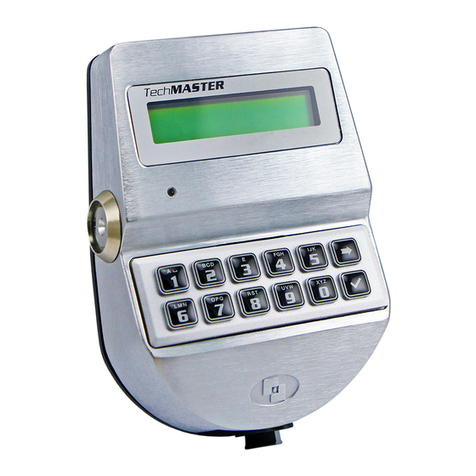
Techmaster
Techmaster T9530 Programming and operating instructions

National Cabinet Lock
National Cabinet Lock C8109 Dimensional drawing
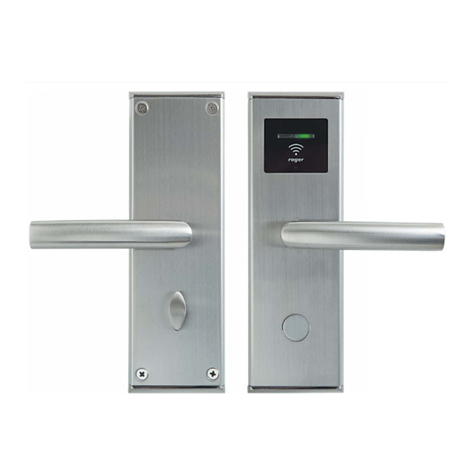
Roger
Roger RWL-1-SL operating manual
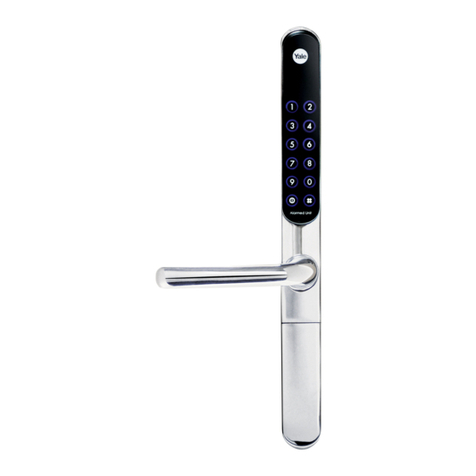
Yale
Yale Keyfree Connected Smart Lock installation manual
